AARP Hearing Center

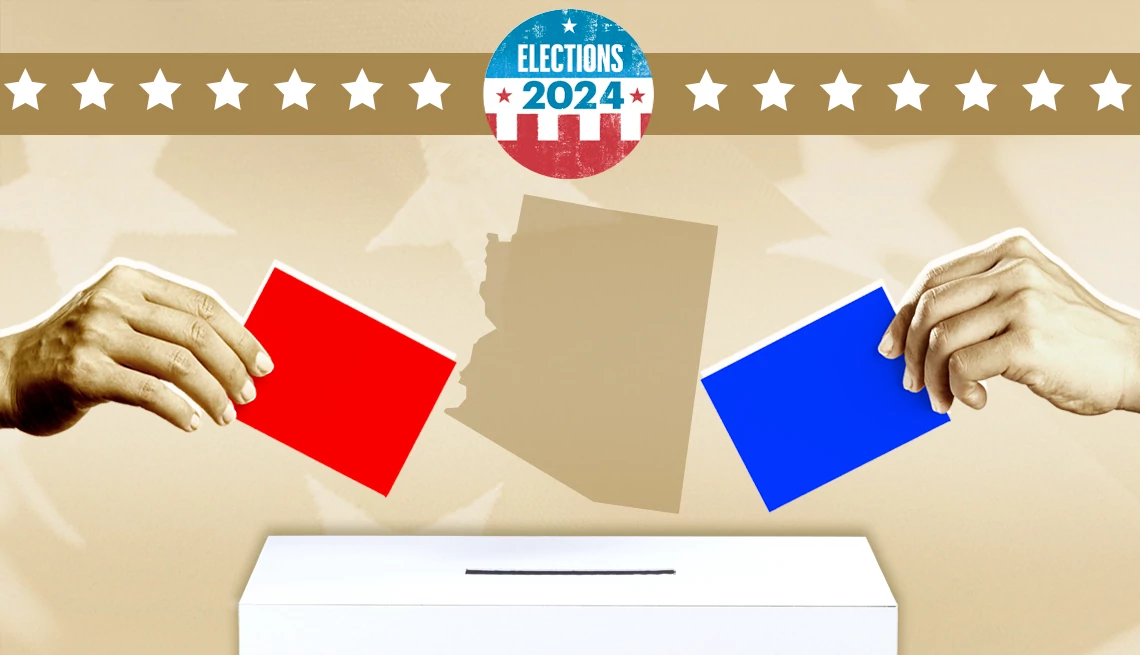
The presidential candidates are running neck and neck among voters in the swing state of Arizona, with Republican Donald Trump leading Democrat Kamala Harris by 2 percentage points, according to an exclusive AARP poll released Tuesday.
In a head-to-head matchup, former President Trump has 50 percent of the vote among likely Arizona voters while Vice President Harris has 48 percent, with 2 percent undecided. Among voters 50-plus, Trump’s lead widens to 8 points, with 53 percent supporting Trump compared to 45 percent for Harris. Two percent are undecided. Among Hispanic voters 50-plus, 59 percent favor Harris and 38 percent favor Trump, with 2 percent undecided, according to the bipartisan poll, which was conducted by the Democratic polling firm Impact Research and the GOP polling firm Fabrizio Ward.
The results, which are within the poll’s margin of error of plus or minus 4 percent for all voters and 3.5 percent for voters 50-plus, show a shift from an AARP-commissioned poll this summer, when President Joe Biden was the Democratic presidential nominee. The recent results show a 4-percentage-point gain for Harris compared to Biden, who had the support of 44 percent of likely Arizona voters in the summer poll, compared to 50 percent for Trump. Harris became the Democratic presidential nominee on Aug. 5 after Biden announced he was exiting the race. Pollsters interviewed 1,358 likely Arizona voters about candidates and top issues from Sept. 24 to Oct. 1.
Hispanic voters make up 20 percent of the electorate in Arizona, says Bob Ward, a partner with Fabrizio Ward. On the full ballot, the poll shows that Harris gained support among older Hispanic voters, with 58 percent saying they back her compared with 48 percent who supported Biden in the summer poll.
“The race looks slightly closer with voters 50-plus than it did in June,” says Jeff Liszt, a partner with Impact Research. “That’s almost all due to Harris doing better with Hispanic voters 50-plus.”

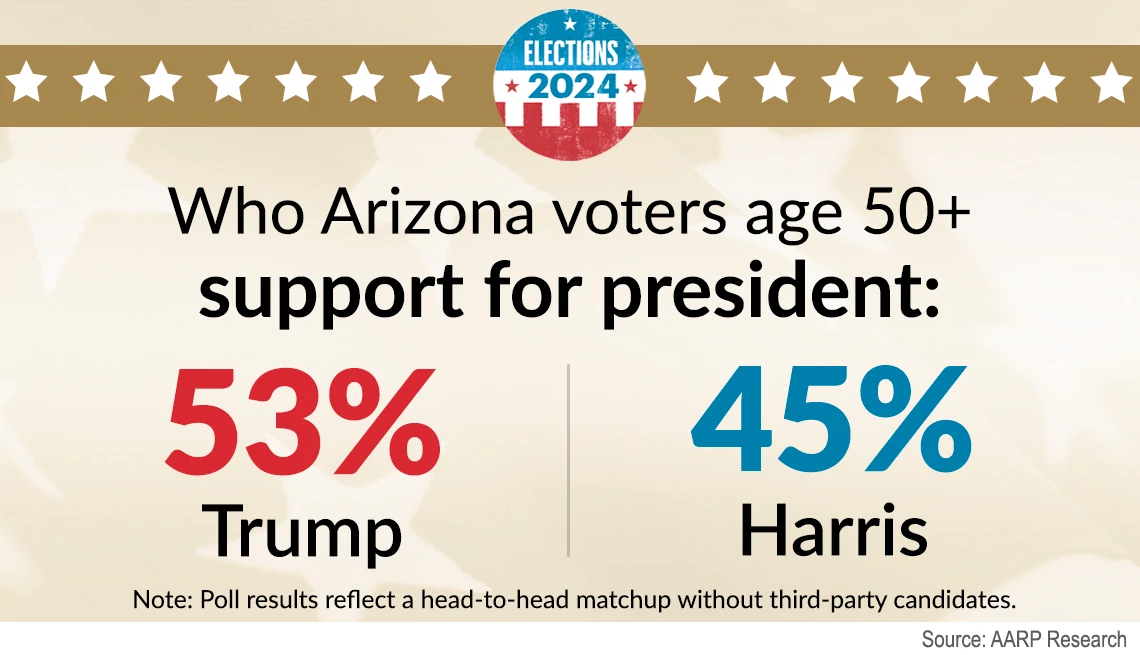
Third-party candidates no longer a factor
The latest AARP poll shows that support for third-party candidates has evaporated, says Ward. Democrats have largely consolidated behind Harris, which was not the case when Biden was in the race, he says. “That is, in large part, due to younger voters who were not willing to commit to Biden [and] are now committing to Harris in expectable ways.”
Arizona is among the battleground states in the presidential election and provides 11 electoral votes toward the 270 total needed to win the presidency. In 2020, Biden won Arizona, receiving 49.4 percent of the vote compared with 49.1 percent for Trump.
“It’s going to be very, very close here,” says Dana Marie Kennedy, state director for AARP Arizona. “And once again, we’re going to be front and center.”




























































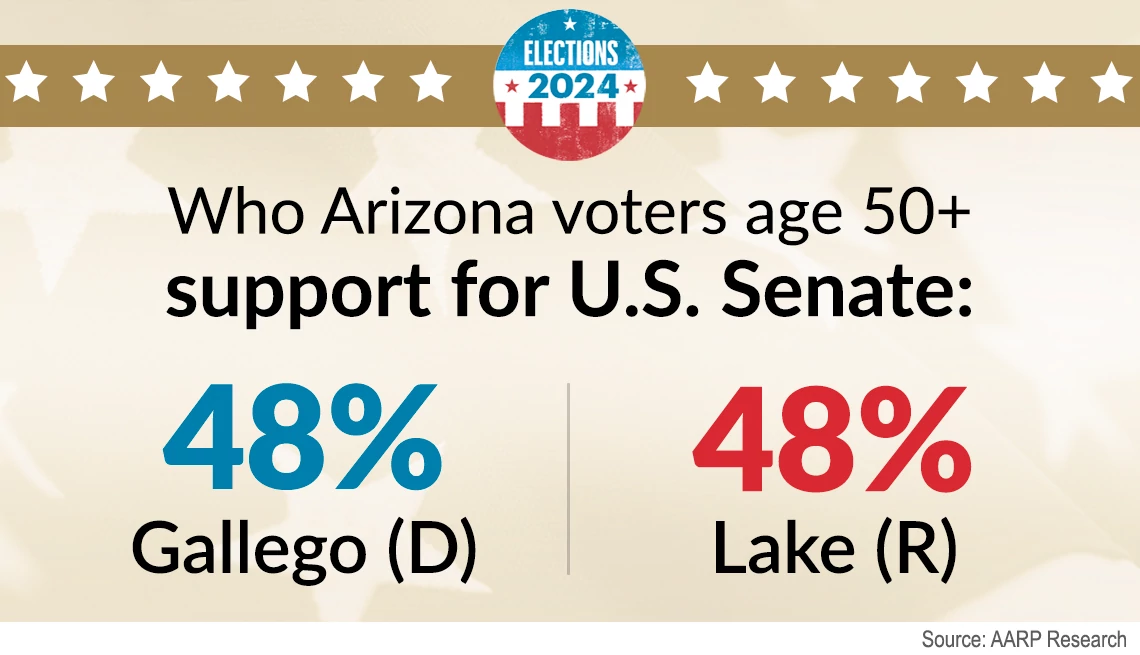
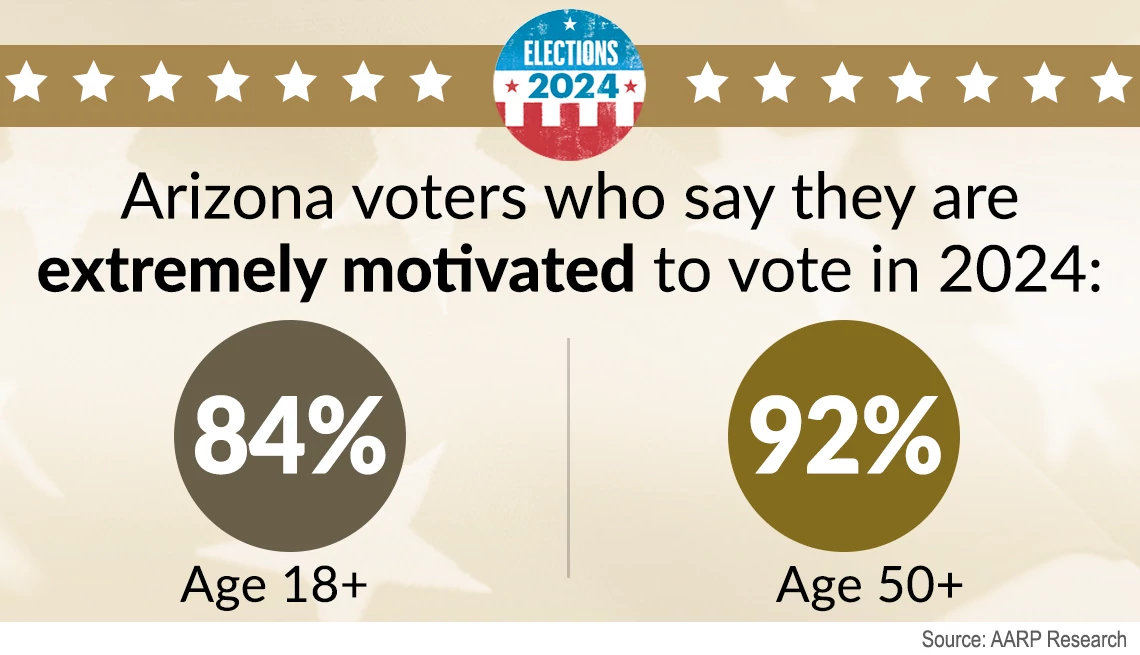

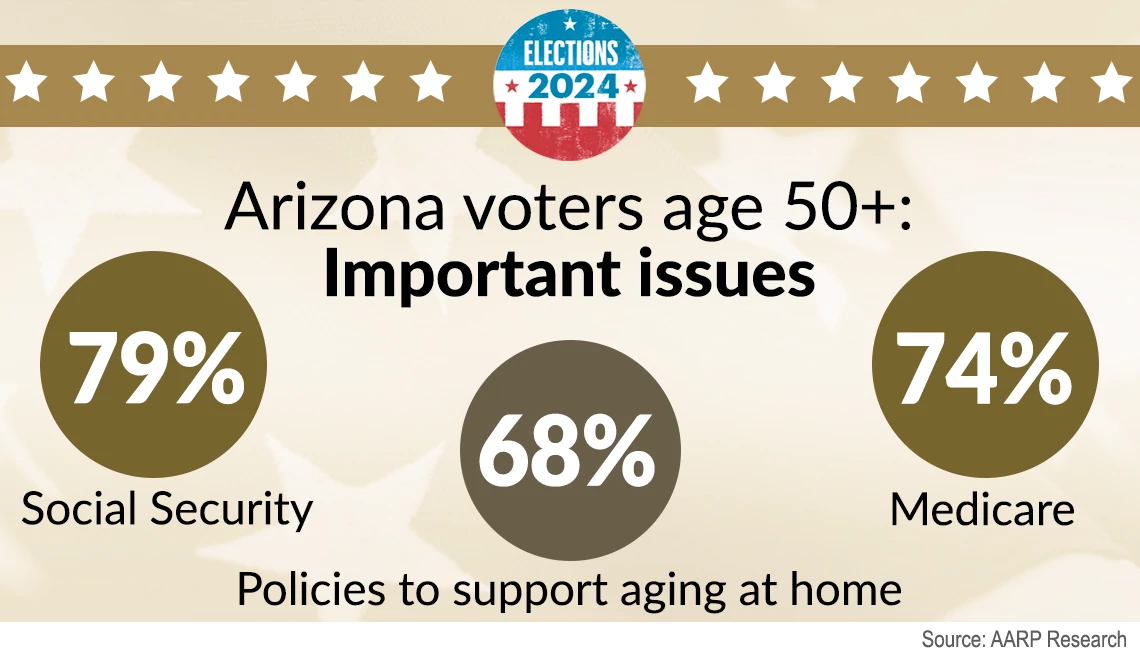


More From AARP
How to Persuade Your Family to Vote This Year
Start conversations about the importance of showing up on Election DayMeet Election Poll Workers Showing Up Year After Year
Civic responsibility, social connections and even pay are prime motivatorsOlder Voters Are Focused on the Economy This Election
This powerful voting group has pocketbook issues top of mindRecommended for You